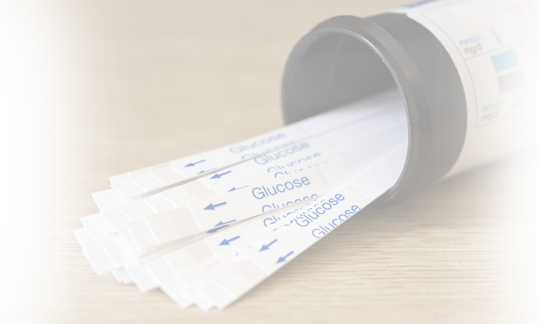
18 August 2021
People with Type-1 diabetes need to stay more physically active so that their chances of getting into complications can be reduced such as heart disease, vision loss, etc. Doing exercise regularly can truly enhance the quality of life.
Type 1 Diabetics
Type-1 Diabetes is also called juvenile diabetes or insulin-dependent diabetes. It is a chronic condition since your pancreas would not be making any insulin or little insulin. Insulin is called a hormone required to allow sugar to get into cells to generate energy.
When it comes to Type 1 diabetes treatment, exercise is regarded as an ideal tool. The fact cannot be ignored that staying fit and active has excellent benefits indeed. Doing exercises helps you to keep your diabetes in control and not get into long-term complications. Risk factor of Type-1 diabetes is age, geography, family history and genetics indeed.
Top 5 Facts
You can still live a happy life after being diagnosed with type 1 diabetes. All you need to do is follow a disciplined lifestyle. Yes, indeed, exercise can truly be a game-changer to control Type-1 diabetes.
But it can also be a reason for frustration and blood sugar unpredictability. Therefore, diabetic people keep asking different questions such as how to manage blood sugar while doing exercise and so on. You are wrong if you think that you cannot master exercise as you are a Type-1 diabetic person. All you need to do is follow the ideal amount of food and insulin at the right times. Here, we are going to share type-1 diabetes facts related to exercise in a detailed manner. Let’s understand
Why You Really Should Exercise?
Do you want to raise your blood sugar level? Have you been contemplating the natural ways to bring your blood sugar level down? When it comes to type 1 diabetes facts, doing regular exercise is one of the best options indeed. Yes, regular exercise is quite important to maintain ideal weight and enhance insulin sensitivity as well. Regular exercise plays a major role to enhance the ratio of insulin sensitivity.
It means your cells would be in an ideal condition to use the available sugar in your bloodstream. Exercise fosters your muscles to consume blood sugar to turn into energy as well as muscle contraction. In case you come across issues to maintain your blood sugar management, you should keep monitoring your level more often.
It will help to understand the entire process of how you need to respond to different physical activities so that your blood sugar will remain at an ideal level instead of either going too high or too low. According to doctors, a person with diabetes should go with these exercises such as running, biking, brisk walking, swimming, hiking, and so on.
How many exercises Should You Do?
There is no particular answer to this question since everyone has a different body and it works differently. To get an answer on how much exercise you need to do; you should check your blood sugar pre, during, and post-exercise. Here, you need to understand how your blood sugar responds. Your motto should be staying into the zone of 100-180 mg/dl while doing physical activities.
You should check your blood sugar when it goes high to start. It will help you to analyze the pure effect of activity without food or insulin changes. You should also do random nighttime tests since many type 1 diabetes people find delayed overnight low after doing exercises.
What Happens to Your Blood Sugar Levels During Exercise?
How exercise would affect your blood sugar depends on different factors? The prominent factor is how long you remain physically active. Different exercises affect your body’s blood sugar level in different ways. Experts say that physical activity can bring your blood sugar level down for up to 24 hours or more. Type 1 diabetes exercise makes your body a tad more sensitive to a hormone called insulin.
If you want to understand how your blood sugar would respond to the physical activities that you do, you need to keep checking blood sugar more often. Frequent checking will help you understand the advantages of physical activities. The best thing is that you would be able to use those results to analyze how the body goes with different activities. Analyzing the patterns is quite important so that you could prevent your blood sugar from getting high or low.
When you do physical activities, insulin sensitivity gets increased indeed. It means your muscles are in condition to use any available insulin to take up glucose during or post physical activity. While doing type 1 diabetes exercise and your muscles contract, your cells are all set to consume glucose and turn it into energy irrespective of the fact insulin is available or not. This is how exercise can truly help in the context of bringing your blood sugar level down indeed. If you remain active regularly then it can bring your A1C lower indeed.
How to Manage Your Blood Sugar Levels for Exercise?
Your blood glucose level may go high if any of these exercises such as football, running, etc. do. You should add an ideal amount of carbs to stay away from hypos during and post physical activities. You should adjust your insulin and keep checking your blood glucose more often.
To understand how your body responds to exercises, you should keep monitoring your blood sugar level. It probably takes a while to understand. Physical activity is good for your mental and physical health both at the same time. Glucose spikes also reduce post meals if you keep doing exercises.
You may also avoid lows and highs during or post exercises following some useful tactics. For example, you should kick off exercises at a Glucose Level of 140 mg/dl. You should also pay attention to mitigate bolus insulin. You should also put effort into reducing basal insulin. Moreover, you should avoid eating food immediately after exercise. You should also try different foods before exercise to understand your blood sugar level frequency.
Conclusion
If you are not able to understand which exercise you should do, you should have a conversation with your doctor. They would be guiding you on which exercises would be more helpful to you and what lifestyle changes you should do.
You should never feel demotivated in case your glucose level goes too high or low quite frequently. You should take it as a challenge. You should keep asking yourself what you can do better next time. You should keep striving in the context of improvement.
Exercises are indeed an amazing tool. We hope the shared information has given you much-needed insight into this topic.
So, prepare your exercise schedule and adhere to it to see the best results.
Popular Post
Smart people believe in making smart decisions. Th...
The motto of Omnipod is simplifying life with diab...
Archives
- December 2021 (3)
- November 2021 (1)
- September 2021 (2)
- August 2021 (5)
- July 2021 (2)
- September 2020 (3)





